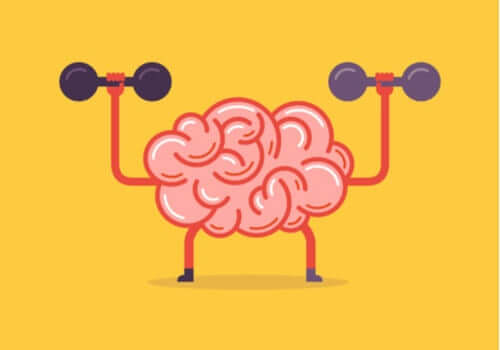We live in a society where the cult of the body is becoming more intense, and we are obsessed with the idea of exercise, but what about the brain?Is there an activity that keeps you in shape, would you like to know how you can exercise it?In this article we will talk about neurobiology, gymnastics for the brain.
It’s good to take care of the physical, but we can’t ignore the brain because it has invaluable value as our body’s center of operations, so our brain also needs to exercise, and we can do it through neurobiology.
- The exercises proposed by neurobiological studies can be adjusted according to the target audience.
- It is possible to evaluate different skills according to the age group.
- For example.
- So we can find exercises for young children and adults or the elderly.
“Every man can be, if he wills, a sculptor of his own brain. ” – Santiago Ramón y Cajal-
Mental gymnastics, brain gymnastics or neurobia are a set of exercises, problems and mental puzzles that improve mental performance proposed by Lawrence Katz and Manning Rubin, neurobiologists at Duke University.
These authors propose neurobiology as an exercise program that treats the brain as a group of muscles that need to be stimulated by routine changes and a battery of exercises that allow you to maintain optimal mental health over time.
According to Katz and Rubin (1999), neurobiology is very different from other types of brain exercise, which often involve logical puzzles and isolated sessions.
Instead, neurobial exercises use all five senses, so that they strengthen and generate different natural pathways available to the brain to create new associations between different types of information. Basically, the creation of new associative models is the central objective of neurobiology.
“The brain is a muscle that can move the world. “Stephen King
The gymnastic exercises offered by neurobics involve the cerebral hemispheres, body movements, the senses, especially the eyes, stimulate myelin and improve learning.
They propose the following objectives: to promote people’s physical condition, the quality of their movements, strengthen psychological and cognitive abilities, promote communication between the brain and the body, and eliminate stress and tension in the body.
It is possible to perform a multitude of exercises. The more creative you are, the wider the possibilities. Some of the options are:
In short, these are exercises that break with our automatic routines and behaviors and make our brain work.
“The healthiest part of the body is the one that exercises the most. “- Seneca-
For a long time, science believed that the brain created new neural connections exclusively in childhood. Katz concluded that the brain designates and processes the necessary sensory contributions, generating new structures and connections in different age groups of life. Can:
The practice of brain gymnastics is important because it allows to use the whole brain and body, improves concentration, balance, thinking, memory, creativity, hearing, attention, perception and concentration.
Is this seen as a strategy that improves learning skills and attitudes, helps prevent and remedy motor disabilities, behavioral problems, orality, writing and hyperactivity?(Orellana, 2010).
Thanks to the exercises offered by neurobiology, it is possible to develop new structures and brain connections, as well as that these techniques can prevent the development of various degenerative disorders, including diseases such as Alzheimer’s disease, depression and Parkinson’s disease.

